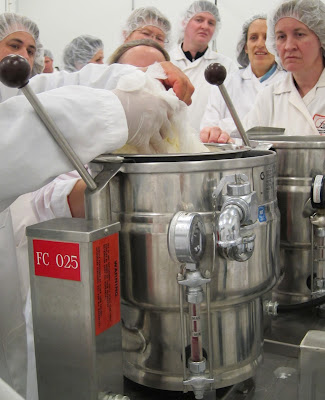Of Food and Culture: Cookbooks that Tell a Story
“Stories by privileged middle-class white people line the shelves of every bookstore, exhibiting their authors’ access to travel, to eating for leisure, and to publishers, as they stumble their way through various food discoveries. These stories do not interest me. The stories I really want to know are those from voices I never hear: the non-white women staking their claims to the food traditions of their heritage; the recipes that have sustained communities for generations, migrating from across the world and taking on new lives.” (Yvonne Maxwell)
In Bibi’s Kitchen
Food tells a story – of people, land, and culture. In Bibi’s Kitchen by Hawa Hassan with Julia Turshen tells the story of food in 8 East African countries that front the Indian Ocean. For each country, the authors provide a brief overview of the country’s history, economics, geography, and culture. But the most interesting part of each chapter are the interviews with grandmothers (bibi) who talk about the food they love to cook and eat, the importance of family and community, and the role of women in their country. Each bibi shows how to cook some of her favorite dishes, and the authors have adapted the recipes for North American kitchens (kale or collards in place of pumpkin leaves). The recipes tell a story of the country’s geography and colonial past. There are plenty of coconuts and local spices as well as a recipe for a spaghetti sauce from Somalia, which was ruled by Italy for many years.
Falastin
Judging by the recipes in Falastin by Sami Tamimi (chef at Ottolenghi and born in Jerusalem) and Tara Wigley, the Palestinian diet would suit me perfectly – lots and lots of veggies followed by very sweet desserts. What I particularly liked about this cookbook was the wealth of background information. Here, for example, is the introduction to the chapter of snacks, spreads, and sauces: “The Palestinian table is only really happy when it’s covered with food. . . .It’s a way to convey bounty, hospitality, and generosity.” I also learned that food cooked at home in Palestine is very different from the way it’s cooked in restaurants: “Home cooking is the opposite of the ‘grab-and-eat’ style of restaurant cooking; it’s slower and more comforting.” The recipes start with “humble” ingredients like pasta or chickpeas, lending themselves to easy, comforting, everyday cooking. Bread is on every table and on every street corner: “Bread is not just something to eat or something to help scoop up other food to eat. For Palestinians, it’s a way of life.” There are also short essays introducing Palestinian food producers – from a women’s dairy cooperative to tahini and olive oil producers. The authors steer clear of making strong political statements, but they come through all the same when you learn how hard it is to fish off Gaza or about life in a refugee camp.
Chaat, Sambal & Combinados
Chaat: Recipes from the Kitchens, Markets, and Railways of India by Maneet Chauhan and Jody Eddy: In India, trains stop at each and every station and local food vendors come on board offering their wares. The cookbook takes readers on a journey throughout India sampling street food. “Chaats are a combination of different flavors and textures. So there is always that sweet, tart, spicy, cooling, and creamy, crunchy, slightly mushy, which you get from potatoes. It’s like each and every taste bud in your mouth gets visited by the chaat, which is such an incredible experience.”
Pasta and Potatoes, the Peruvian Way by Nico Vera: Each of us, depending on our cultural background, defines comfort food differently. For Vera, the ultimate comfort food is pasta with red sauce alongside cheesy potatoes, summing up Peru’s Italian and Andean roots in one plate.
Coconut and Sambal: Recipes from my Indonesian Kitchen by Lara Lee: “Lee is part Chinese Indonesian and part Australian. She grew up in Sydney, eating food made by her Indonesian grandmother, whom she called Popo. . . . ‘Back then I was too young to learn her recipes,’ she writes. ‘But the flavors of Popo's food left an impression that stayed with me long after she moved back to Timor and later passed away.’"
PS The photo gives you a glimpse of my cultural heritage - born of British parents, I spent the first 6 years of my life in East Africa (Arusha, Mt. Meru in the distance - Penny, Pauline, and probably Paul, a neighbour)







Comments